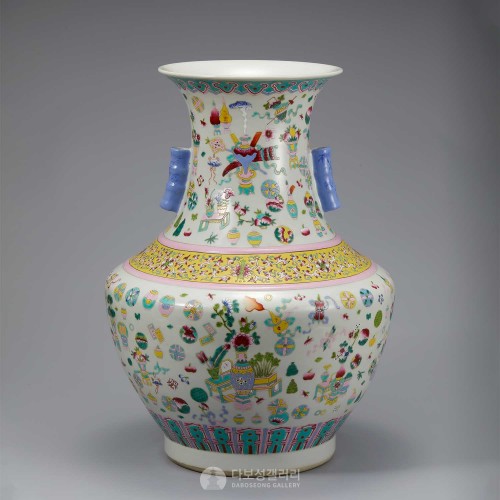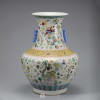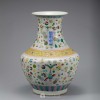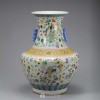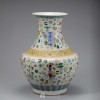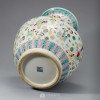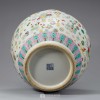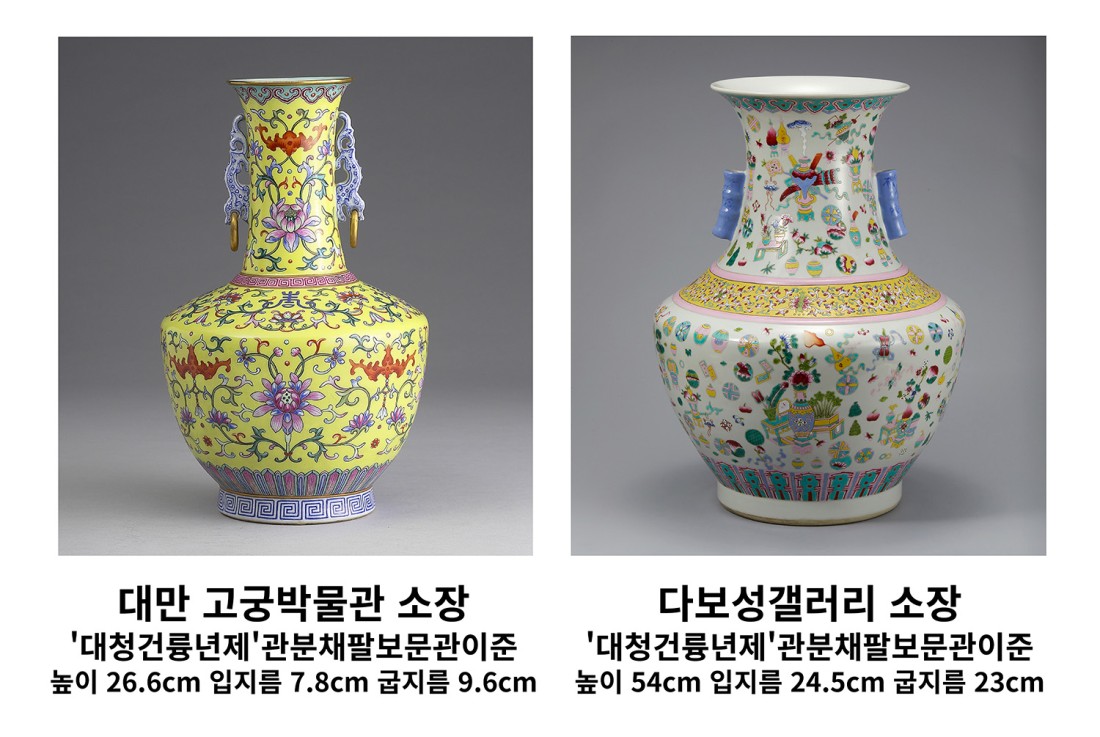본문
고대 중국의 제기를 본떠 만든 기형에 분채로 꽃 등 여덟 가지의 팔보(八寶)를 그린 준(尊)입니다.
구연부가 벌어져 있고 어깨가 넓게 부푼 형태로 목 양쪽에 푸른 대나무 모양으로 표현한 귀가 조각되어 있습니다.
몸체에는 8가지 상서로운 물건이라는 뜻의 팔보(八寶)가 그려져 있는데 이는 팔길상(八吉祥)이라고도 합니다.
팔보는 원나라 때 '8(八)'이 '돈을 벌다'는 뜻의 '파차이(發財)'의 첫 글자와 발음이 같아 행운의 상징으로 여겨졌으며, 불교와 도교 모두 팔보를 만수길상(萬壽吉祥)이라는 현실적 염원의 표현에 사용하였습니다.
굽 바닥에는 청나라 건륭제(1736~1795) 때 만들어졌음을 알려주는 '대청건륭년제(大清乾隆年製)'라는 관지(款識)가 쓰여 있습니다.
这是仿照中国祭祀制器的器型上,用粉彩纹饰花朵等八宝的尊。
口沿部外撇,阔肩,颈部两侧对称饰有翠竹形状的贯耳。
尊身绘有象征吉祥之意的八宝纹,也叫八吉祥。
在元代,8(八)与获得许多财富的“发财”的“发”谐音,作为幸运的象征装饰在陶瓷上,佛教和道教将八宝作为万寿吉祥的现实愿望的表现。
底足刻有“大清乾隆年制”的款识,意为清代乾隆帝(1736~1795)制造。
━━━━━
This vessel is enameled with eight treasures, flowers, etc., and the form is modeled on the ritual vessels of ancient China.
The mouth is flared, and the neck is flanked by blue bamboo-shaped lug handles, sweeping into the bulging shoulder.
On the body are painted Eight Treasures (八寶, babao) indicating eight auspicious signs, also known as Ashtamangala.
Bao (寶) was pronounced the same as the first letter of the word fa chai (發財), which means 'to earn money' in the Yuan Dynasty, and was regarded as a lucky sign and painted on many ceramics.
The sign was used to express realistic desire in both Taoism and Buddhism.
The base of the foot is inscribed with a seal mark reading Da Qing Qianlong Nian Zhi, indicating that the present work was produced in the Qianlong era.
